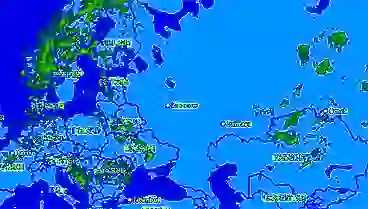🌍 How Climate Change Is Affecting Global Weather Patterns

🌡️ Introduction
The climate of our planet is shifting rapidly, and it’s no longer a distant concern. From deadly heatwaves in Europe to unpredictable monsoons in Asia, the effects of climate change on global weather
patterns are becoming impossible to ignore. Scientists across the world agree: the Earth is warming, and this is disrupting the balance of atmospheric systems that have governed weather for millennia. But how exactly is climate change altering the global weather landscape? Let’s break it down.
☀️ Rising Global Temperatures
The most direct impact of climate change is the steady rise in average global temperatures. Over the past century, the Earth’s surface temperature has increased by 1.1°C, according to NASA. While this might sound small, even slight increases in temperature can cause huge shifts in weather systems.
Key effects:
- Warmer oceans, leading to stronger hurricanes and cyclones
- Melting polar ice, which disrupts ocean currents and jet streams
- Longer, more intense heatwaves in many parts of the world
🌧️ Extreme Weather Events Are Increasing
Climate change is fueling more frequent and intense weather disasters. From floods to droughts, our weather systems are becoming more volatile.
🌊 Floods
Warmer air holds more moisture, resulting in heavier rainfall. Regions that already experience monsoons or seasonal rain, such as South Asia, are seeing flash floods at unprecedented rates.
🔥 Droughts and Wildfires
Other regions, especially in Africa and Australia, are becoming drier and more drought-prone. The lack of rain, combined with higher temperatures, leads to wildfires that spread faster and burn longer.
❄️ Winter Storms
It might seem counterintuitive, but climate change can also intensify cold snaps. Melting Arctic ice weakens the polar vortex, allowing frigid air to escape and reach lower latitudes.
🌪️ Stronger Storms and Hurricanes
Hurricanes are becoming stronger, slower, and wetter. Warm ocean water is the fuel that powers these massive storms. As sea temperatures rise, so do wind speeds and rainfall volumes. For example, hurricanes like Harvey, Maria, and Idai caused catastrophic damage partially due to warmer waters and altered wind patterns.
Did You Know?
Hurricane Harvey (2017) dumped over 60 inches of rain on parts of Texas—the most rainfall from a single storm in U.S. history.
🧭 Shifting Climate Zones
Traditional climate zones are shifting northward or southward, depending on the hemisphere. This means:
- Crops are failing in regions where they once thrived.
- Animals and insects are migrating to new habitats, affecting ecosystems.
- Tropical diseases like dengue and malaria are spreading to temperate regions.
🌱 Impact on Agriculture and Food Security
Weather instability directly affects food production. Farmers around the world are struggling to predict rainfall, frost, and temperature—factors critical to crop success.
- Prolonged droughts are reducing harvests of staples like wheat, maize, and rice.
- Unseasonal rainfall is leading to crop rot and soil erosion.
- Livestock are suffering from heat stress and water shortages.
The result? Increased food prices and growing risk of famine in vulnerable regions.
🌊 Rising Sea Levels and Coastal Weather
As glaciers and polar ice caps melt, sea levels are rising, increasing the risk of coastal flooding and erosion.
- Low-lying countries like Bangladesh and island nations in the Pacific face existential threats.
- Coastal cities like New York, Jakarta, and Venice are investing billions in climate defenses.
Saltwater intrusion into freshwater systems also impacts agriculture and drinking water.
🛰️ Data-Backed Science and Forecasts
Meteorologists and climate scientists use satellite data, climate models, and historical records to study the impact of greenhouse gases on weather.
Key reports:
- IPCC Reports provide global consensus on climate trends.
- NASA and NOAA offer up-to-date research on ocean temperatures, CO₂ levels, and extreme weather predictions.
These tools are essential for planning infrastructure, agriculture, and disaster response strategies.
🛠️ Can We Adapt to These Changes?
Yes—but it requires coordinated global action. Here’s how:
✅ Mitigation:
- Reduce greenhouse gas emissions via renewable energy, electric vehicles, and energy efficiency.
- Protect forests and wetlands, which absorb CO₂ naturally.
✅ Adaptation:
- Build flood-resistant infrastructure
- Invest in smart agriculture
- Develop early-warning systems for disasters
Climate change is not just an environmental issue—it’s economic, social, and political. Everyone has a role to play.
🌐 Global Cooperation Is Crucial
Tackling the impact of climate change on global weather isn’t something a single country can solve alone. Greenhouse gas emissions do not respect borders. As a result, international agreements like the Paris Climate Accord aim to unify countries in reducing carbon emissions and investing in green technologies.
Organizations such as the United Nations Framework Convention on Climate Change (UNFCCC) are pushing for stronger global commitments to limit temperature rise to 1.5°C. However, progress is uneven. While some nations are transitioning to renewable energy, others still depend heavily on fossil fuels. Long-term success depends on collaborative efforts, transparency, and sustained funding.
🧠 Conclusion
Climate change is no longer a theory—it’s a reality shaping our weather in powerful, often dangerous ways. The more we understand how global warming disrupts natural systems, the better we can prepare for the challenges ahead.
Whether you’re a policymaker, farmer, or citizen, awareness is the first step toward resilience. Let’s stay informed, support science, and push for sustainable solutions—before our weather becomes permanently unpredictable.